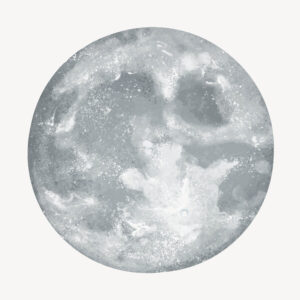In the ever-evolving realm of space exploration, the Indian Space Research Organisation (ISRO) has once again demonstrated its prowess. Just a day after the Vikram lander was put into sleep mode, ISRO unveiled a captivating revelation – 3D images of the lunar surface. These extraordinary visuals were created through the innovative use of technology, specifically ‘Anaglyph,’ a term that’s about to take you on a mesmerizing journey through the moon’s topography.

The Enchanting Anaglyph: A Window to Lunar Dimensions
- What is Anaglyph?
To begin our lunar adventure, let’s decipher the term ‘Anaglyph.’ Anaglyph is a simple yet awe-inspiring visualization technique that brings objects and terrains to life in three dimensions. It achieves this remarkable feat by amalgamating stereo or multi-view images.
- The NavCam Stereo’s Role
The heart of this lunar revelation lies in the NavCam Stereo, an onboard technology featured on the Pragyan rover. This advanced piece of equipment captures both left and right images, serving as the primary source for generating these enthralling 3D lunar images.
A Splash of Colors on the Moon: Decoding the Anaglyph
- The Unique Lunar Palette
What makes these lunar images truly unique is their color scheme. In this cosmic canvas, the left channel showcases the vivid reds, while the right channel unfurls a mesmerizing blend of green and blue hues. This intriguing combination presents Vikram, the lander, from multiple angles, revealing the moon’s surface in unprecedented detail.
- NavCam for Terrain Perception
The NavCam, primarily designed for enhancing terrain perception on the moon, aids in avoiding craters and mounds, ensuring the safety of lunar missions.
The Science Behind the Stereo Effect and 3D images
- The Art of Stereo Imaging
In this 3-channel image, the left image is strategically placed in the red channel, while its counterpart finds a home in the blue and green channels, creating a captivating cyan effect. The magic, however, lies in the difference in perspective between these two images, which produces the stereo effect – a visual marvel that conjures the illusion of three dimensions.
- The 3D Viewing Experience
To unlock the full splendor of these lunar images, scientists recommend donning special red and cyan glasses. These glasses harmonize with the color channels to offer a breathtaking three-dimensional experience that brings the moon closer to Earth than ever before.

The Architects Behind the Vision
- LEOS: The Brain behind NavCam
The NavCam, a pivotal player in this lunar spectacle, is a creation of ISRO’s Laboratory for Electro-Optics Systems (LEOS). The agency’s relentless dedication to innovation is evident in this cutting-edge technology.
- SAC: Mastering Data Processing
In the realm of space technology, data processing plays a pivotal role. ISRO entrusted this crucial task to the Space Applications Centre (SAC), demonstrating their holistic approach to mission success.

Conclusion: A Glimpse into the Future
In a world filled with technological marvels, ISRO’s unveiling of 3D lunar images through Anaglyph is a testament to human ingenuity and the unquenchable thirst for exploration. This achievement not only bridges the gap between Earth and the moon but also opens doors to even more breathtaking discoveries in the future.
FAQs
1. How were these 3D lunar images created?
The 3D lunar images were created using a technique called Anaglyph, which combines left and right images captured by the NavCam Stereo onboard the Pragyan rover.
2. What is the significance of the color scheme in these images?
The color scheme adds depth and detail to the lunar images. The left channel displays red, while the right channel displays a combination of green and blue, resulting in a captivating 3D effect.
3. Can anyone view these 3D images, or do I need special glasses?
To fully appreciate the 3D effect, it’s recommended to use red and cyan glasses. These glasses enhance the depth and immersion of the lunar visuals.
4. Who developed the NavCam Stereo technology?
The NavCam Stereo technology was developed by ISRO’s Laboratory for Electro-Optics Systems (LEOS), showcasing India’s expertise in space technology.
5. What role did the Space Applications Centre (SAC) play in this achievement?
SAC was responsible for processing the data collected by the NavCam Stereo, ensuring the successful creation of these 3D lunar images.
- for more exciting news visit-www.com373news.com
- BOOKS written by author-i)love beyond age
Карниз для штор по мере необходимости
электрический карниз https://prokarniz11.ru.
Магазин пряжи в Москве
магазин пряжи в москве адрес https://klubok11.ru.
Управлять бухгалтерской документацией и сведениями легко с Облаком 1С
1с 8.3 облако https://www.423clouds.ru/.
Новейшие достижения в мире машин и экспертные рекомендации для профессионалов за рулем.
Приглашаем исследовать интересные сюжеты, что помогут расширить ваш обзор:
сколько стоит растаможка авто из германии : https://sibprom-nsk.ru/skolko-budet-stoit-rastamozhka-avto-iz-germanii-uznajte-stoimost-rastamozhki-avtomobilya-iz-germanii-v-state/
узнать стоимость автомобиля : https://sibprom-nsk.ru/kak-uznat-stoimost-svoego-avtomobilya-onlajn-bystro-besplatno-i-bez-usilij-nazvanie-sajta/
как наклеить тонировку : https://sibprom-nsk.ru/kak-nakleit-tonirovku-na-avto-samostoyatelno-poshagovaya-instrukciya/
лучшие дворники для авто : https://sibprom-nsk.ru/top-5-luchshix-dvornikov-dlya-vashego-avtomobilya/
лучшая пленка для авто : https://sibprom-nsk.ru/luchshaya-plenka-dlya-avto-obzor-i-sravnenie-populyarnyx-brendov/
Быстромонтируемые строения – это прогрессивные системы, которые отличаются громадной скоростью установки и гибкостью. Они представляют собой здания, состоящие из предварительно произведенных составных частей либо узлов, которые способны быть быстрыми темпами установлены в пункте застройки.
Быстровозводимые здания отличаются гибкостью также адаптируемостью, что дает возможность легко изменять и трансформировать их в соответствии с потребностями клиента. Это экономически результативное и экологически долговечное решение, которое в крайние годы заполучило маштабное распространение.